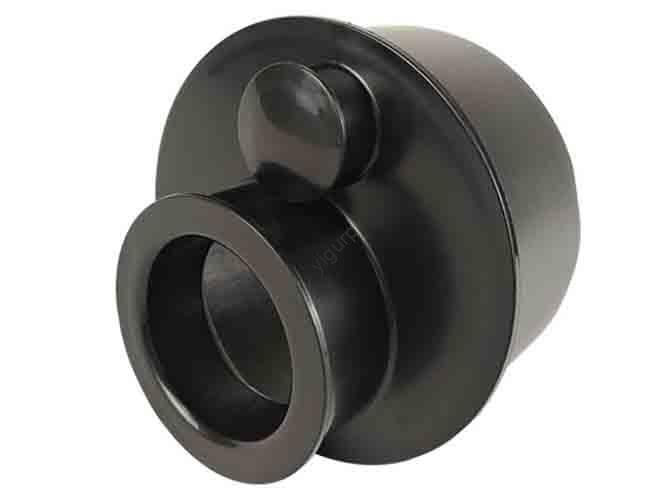Lors du développement de nouveaux produits, choisir les bons matériaux pour pièces prototypes et répliques directly affects testing accuracy, efficacité de production, et contrôle des coûts. This article will break down common materials, their performance comparisons, et des stratégies de sélection pour vous aider à prendre des décisions éclairées.
1. Core Materials for Prototype & Replica Parts: Aperçu & Traits clés
Below is a detailed table of 7 matériaux largement utilisés, including their core advantages, typical applications, and limitations—designed to let you quickly match materials to your needs.
| Nom de matériel | Avantages de base | Applications typiques | Limites |
| Polyuréthane (Puan) | Forte résistance, good expandability; flexible/rigid options | Soft rubber parts, ABS/PC-like replicas | Lower heat resistance than high-temp materials |
| Silicone | Excellent elasticity, Demolding facile | Elastic components (Par exemple, joints, poignées douces) | Low mechanical strength; not for load-bearing parts |
| Abs | Force équilibrée & dureté, traitement facile | Structural prototypes (Par exemple, logements, cadres) | Poor chemical resistance to strong solvents |
| Pp (Polypropylène) | Good chemical stability, résistance à la chaleur (~100°C) | Pièces de contact alimentaire, composants légers | Low impact resistance at low temperatures |
| PC (Polycarbonate) | Transparence élevée, forte résistance à l'impact | Pièces transparentes (Par exemple, lentilles, couvertures) | Sujet à gratter; higher cost than acrylic |
| Acrylique (PMMA) | Transparence supérieure, easy polishing | Display prototypes (Par exemple, exhibition models) | Fragile; lower impact resistance than PC |
| Matériaux résistants à haute température | Résister >200° C; maintains performance in heat | Pièces de moteur, high-temp tooling | Coût plus élevé; complex processing |
2. How to Compare Materials for Specific Needs? (Contraste & Decision Guide)
Not sure whether to pick PC VS. Acrylique for a transparent part, ou PU vs. Silicone for a flexible component? Use these side-by-side comparisons to resolve common dilemmas.
2.1 Transparent Prototype Parts: PC VS. Acrylique
| Facteur de comparaison | PC (Polycarbonate) | Acrylique (PMMA) |
| Transparence | ~90% (slight blue tint) | ~92% (clearer) |
| Résistance à l'impact | Excellent (unbreakable in most cases) | Pauvre (easily cracked) |
| Résistance à gratter | Faible (Besoin de revêtement) | Moyen (better than PC) |
| Coût | Plus haut | Inférieur |
| Recommandation | For parts needing durability (Par exemple, safety covers) | For display-only parts (Par exemple, model showcases) |
2.2 Flexible Prototype Parts: PU vs. Silicone
If your project requires flexibility, demander: Do I need strength or extreme elasticity?
- Puan: Ideal for parts that need both flexibility and structural support (Par exemple, soft rubber grips for tools). It can mimic the hardness of ABS or PC, making it versatile for functional testing.
- Silicone: Better for parts that prioritize elasticity and heat resistance (Par exemple, seals for high-temp devices). Cependant, its low mechanical strength means it’s not suitable for load-bearing roles.
3. 3 Key Factors to Choose the Right Material
Selecting prototype and replica materials is not about “the best material”—but the “most suitable” one. Follow this linear decision process:
- Define Performance Requirements First
Demander: La partie sera exposée à des températures élevées? Does it need transparency or flexibility? Par exemple:
- High-temp environments → Choose high-temperature resistant materials.
- Display purposes → Prioritize acrylic (rentable) ou PC (durable).
- Coût du solde & Délai de mise en œuvre
- Faible coût, fast-turnaround prototypes → ABS or PP (facile à traiter, largement disponible).
- High-cost, specialized needs → PC or high-temperature materials (justify with critical performance demands).
- Consider Post-Processing Needs
- If you need polishing (Par exemple, pièces transparentes) → Acrylic is easier to polish than PC.
- If you need painting or bonding → ABS adheres better to paints than PP.
4. Perspective de la technologie Yigu sur la sélection des matériaux prototypes
À la technologie Yigu, Nous croyons à la sélection des matériaux pour pièces prototypes et répliques should align with “fast validation + cost optimization.” Most clients initially lean toward over-spec materials (Par exemple, choosing PC for simple display models), which increases costs unnecessarily. Our team recommends starting with a “minimum viable material”: use ABS for structural tests, acrylic for displays, and PU for flexible simulations. As the product iterates, we then upgrade to specialized materials (Par exemple, high-temperature options) only when performance demands it. This approach cuts lead time by 30% on average and reduces material costs by 20%, while still ensuring accurate prototype validation.
FAQ: Common Questions About Prototype & Replica Materials
- Q: Can silicone be used directly as a prototype material, or only for making molds?
UN: Silicone can be used directly for prototypes—especially for elastic parts like gaskets or soft covers. Cependant, it’s not suitable for load-bearing or high-strength applications due to its low mechanical strength.
- Q: Which material is better for food-contact prototype parts: PP or ABS?
UN: PP is the better choice. It has good chemical stability, is non-toxic, and meets food safety standards (Par exemple, FDA approval). Abs, en revanche, may release harmful substances when in contact with food or high temperatures.
- Q: Comment améliorer la résistance thermique d'un prototype si j'utilise du PU?
UN: Vous pouvez ajouter des additifs résistants à la chaleur au PU pendant le traitement (Par exemple, charges en fibre de verre ou en céramique) pour améliorer sa résistance à la chaleur de 10 à 20°C. Pour les pièces nécessitant >150Résistance °C, cependant, il vaut mieux passer à des matériaux dédiés haute température.
